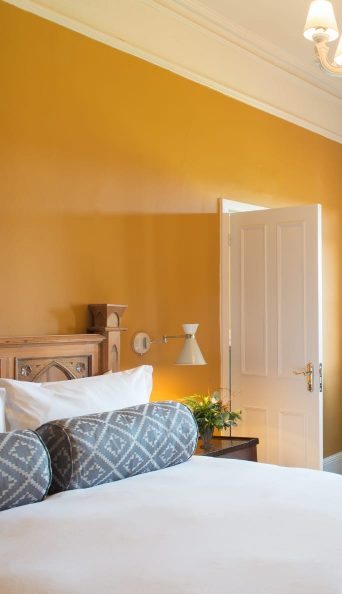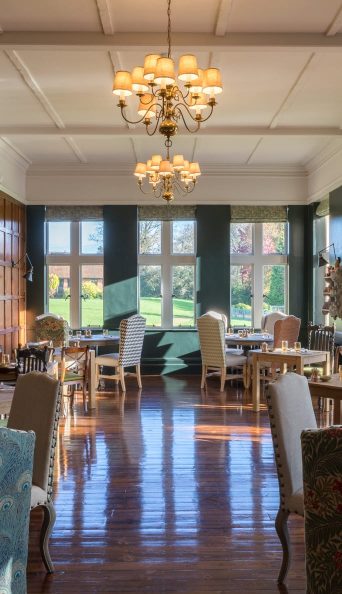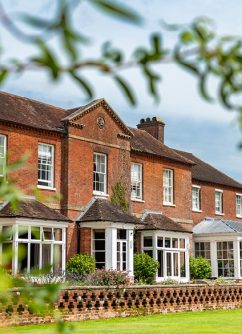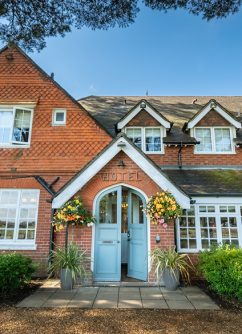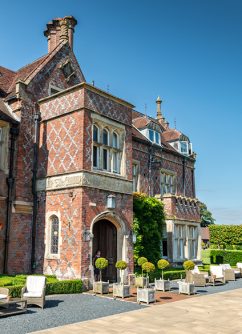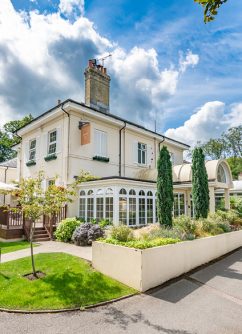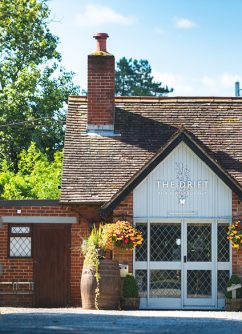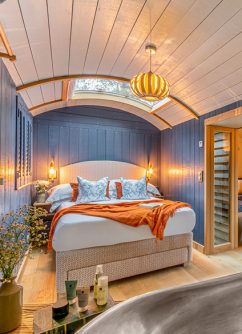Journal New Forest Collection
New Forest Vs Lake District
New Forest Vs Lake District
The New Forest and the Lake District are both areas in the UK renowned for their profound heritage, outstanding natural beauty and wildlife, making them popular tourist destinations for travellers and UK residents. The Lake District covers 2,362 km² and is of course known for its lakes: Windermere, Ullswater and Derwentwater being the three largest.
Comparatively, the New Forest covers 566 km² and is known for its gorgeous National Park, native New Forest ponies and heathland. Amongst its beautiful country scenery and wealth of pubs, restaurants and things to do.
Location
The Lake District can be found in Cumbira, the North West of England with Leeds and Middlesborough being some of the nearest bigger cities.
The New Forest is located in Hampshire, southern England. Getting to the New Forest is easy with the most local cities being Southampton and Bournemouth.
New Forest Vs Lake District: Wildlife
Both the Lake District and the New Forest are home to some gorgeous wildlife and native species. Lots of tourists from across the UK travel to both areas to see the stunning natural scenery and the animals that call the regions home.
The Lake District is home to Red squirrels, red and roe deer, as well as otters that can be most likely found in Derwent Water and Keswick playing in the fields and the lakes. Birds of prey such as the Red Kite and Osprey can be spotted and Herdwick sheep are also native to the Lakes and are found on farms throughout the fells with large numbers visible around Buttermere, Coniston, Wasdale and Borrow.
The New Forest is of course home to the New Forest pony, as well as some hardy donkeys that free-roam all year round and can often be found in villages such as Brockenhurst, Burley and Beaulieu, rather than out on the heathland.
The New Forest also is home to some pigs which you can even see roaming about. They are turned out every autumn by the Commoners in an act known as ‘Pannage’, which dates back to the time of William the Conqueror, who founded the New Forest. Pannage involves the pigs eating the acorns and chestnuts that have fallen from the floor, preventing the ponies from eating them, as acorns and nuts are poisonous to them.
New Forest Vs Lake District: History and heritage
As historical British regions, both the Lakes and the New Forest are steeped in heritage and history. The New Forest was founded by William the Conqueror in 1079 and is one of the largest remaining tracts of unenclosed pasture land, heathland and forest in the South of England, covering southwest Hampshire and southeast Wiltshire. It was proclaimed a royal forest by William the Conqueror in the Domesday Book: one of the earliest public records detailing lands and pre-industrial society.
The Lake District is also incredibly historical with a rich heritage as early as the beginning of human settlement. Celts, Romans, Angles, and Vikings all settled among the Lakes, with the Vikings providing place-name elements such as “-thwaite” (clearing), “fell” (mountain with grazing), “gill” (ravine), “force” (waterfall), and also introduced the local Herdwick sheep which can be still be found in the Lakes.
New Forest Vs Lake District: Landscapes
The landscapes of the Lake District and the New Forest are quite different. The Lakes have seen 500 million years of geological processes which have produced a physical landscape of mountains and lakes that are of great scenic beauty to locals and tourists. The Lake District’s landscape includes smooth U-shaped valleys and steep ridges that make up England’s highest mountain and deepest and longest lakes such as Windemere and Ullswater. The Lake District is more of an arborous hike than the comparatively flatter New Forest.
The New Forest is not known for lakes or peaks, instead it is known for ancient woodlands. The landscape of the New Forest National Park is beautiful, rare and somewhat fragile. It is comprised of ancient and ornamental woodland, heather-covered heaths, pretty rivers and valley mires, as well as a coastline of mudflats and saltmarshes.
The New Forest and the Lakes both have a host of gorgeous, historic villages, listed buildings and historical National Trust period homes that are still open to the public.
New Forest Vs Lake District: Walks
Both locations are fabulous destinations if you’re looking for a gorgeous walk amongst natural scenery, wildlife and the fresh air. You’ll find stunning National Parks in both destinations, as well as some other walking routes. We’ve listed a few walks for each below, but there is an abundance of walking trails in each location should you want to look around.
The New Forest:
Godshill and Castle Hill, this walk takes you along quiet field and woodland paths to the site of an Iron Age hill fort, continuing to a stream-side hamlet on the edge of Castle Hill. This walk is 2.6 miles.
Brockenhurst village walk is a picturesque village in the heart of the New Forest surrounded by some of the most picturesque forest landscapes. Starting from the village with its famous watersplash, this varied 5 mile walk takes you across grazed lawns and through riverside woodlands before skirting around the edge of the village to take in some grand heathland views.
The Copythorne and Cadnam Commons walk starts by passing St Mary’s Church before winding through Copythorne Common and its magical mix of woodland and open glades. The 4 mile route follows rhododendron and woodland edged tracks to the Cadnam River and the northern commons.
The Lake District:
The 2.5 mile Sizergh walk from Sizergh castle offers views of the Lakeland Fells, the Pennines and Morecambe Bay, as well as a fantastic opportunity to spot native animals, birds, butterflies and wildflowers that vary with the seasons.
Alcock Tarn walk, starting in the heart of the lakeside village of Grasmere, this circular walk climbs to a small tarn, a beautiful place to have lunch. Winding through trees and out to views of the valley, lakes and surrounding fells, you’ll take in history from miners and coffin-bearers to Wordsworth along the way. This walk is around 3.7 miles.
Whitehaven colourful coastal 7 mile walk.This dramatic clifftop walk starts at Whitehaven’s historic 17th-century harbour then passes the town’s industrial archaeology to join Wainwright’s Coast to Coast path for gorgeous coastal views and natural scenery.
Stickle Tarn 1.9 mile trail. This steep out-and-back path follows the Stickle Ghyll stream all the way up to Stickle Tarn, with striking views across Great Langdale. Take a rest to wonder at striking waterfalls and rock pools cut into the mountainside.
New Forest Vs Lake District: Activities
Both locations offer an abundance of activities to visitors, whether you’re keen to explore the local landscapes, National Parks and villages, or if you’d like to get a bit more active with activity centres or tourist attractions, you’ll find plenty to do.
In the Lake District you can enjoy a variety of lake tours taking you around the gorgeous sights of the Lakes, as well as lots of lake activities including kayaking, canoeing, boating, and paddle boarding at various activity centres across the district.
Other activities include various National Trust locations including Wray Castle and Gowbarrow Park. For some more recent culture the Lakes is home to the Beatrix Potter museum, various art galleries and some wildlife centres where you can get more familiar with birds of prey, owls and reptiles.
The New Forest similarly offers an abundance of gorgeous walks and historical National Trust and walking locations, including the Northern Commons and Highcliffe Castle. The New forest is also home to a variety of kid friendly attractions such as Paultons Park – the home of Peppa Pig World, Furzey Gardens – a fairy garden with fairy doors, and the New Forest water park.
Like the Lakes, the New Forest also offers a host of activity centres and opportunity to enjoy some kayaking, canoeing, climbing and archery, amongst other things. You’ll never be bored in either destination.
New Forest Vs Lake District: What makes them unique?
Both destinations are incredibly beautiful with unique features. The New Forest, as the southern destination, is slightly warmer and is home to some wild snakes and lizards not found elsewhere. Similarly, the New Forest ponies and donkeys are other charming attributes to the New Forest, as well as its open heathland.
The Lakes on the other hand are well known for exactly that – the lakes. Windermere has long been a historical point as the largest of the lakes. The romantic poets Cooleridge and Wordsworth were passionate about the natural beauty of the lakes.
New Forest: Accommodation and food
The New Forest is undoubtedly a gorgeous location with a wealth of things to see and do when visiting. If you’re looking for accommodation in the New Forest, New Forest Collection offers gorgeous locations with charming and striking features that appeal to all visitors.
Gorgeous Bartley Lodge is a Grade II listed building from the eighteen hundreds, offering guests charming and comfortable accommodation with picturesque grounds, sights of national wildlife and a gorgeous onsite restaurant specialising in creating gorgeous meals from locally farmed produce. Bartley Lodge is little one friendly with an onsite swimming pool and lots of welcoming features for families, couples and groups.
Equally enchanting Forest Lodge also has a pool and is located not too far from Lyndhurst – the foodie ‘capital’ of the New Forest, and the perfect day out if you want to try lots of local produce. Forest Lodge is also home to the award winning restaurant, 1820, and the perfect place to stay for food lovers in the New Forest.
Beaulieu Inn is set right in the middle of vast heath, near the quaint picturesque village of Beaulieu. Beaulieu Inn is a former coaching inn with New Forest ponies and donkeys, which can still be seen right outside the windows for a truly magical stay in the New Forest. Charming country pub, The Drift Inn, can be found next door for country style meals from locally sourced produce.
Our other location, historic and grand Burley Manor is perfect for those looking to rest and relax with the onsite wellness facilities. The impressive, Baronial-style manor house built in 1852 is set within an eight-hundred-year-old estate, surrounded by rolling countryside and Burley Park and reserved for grown up guests only.
